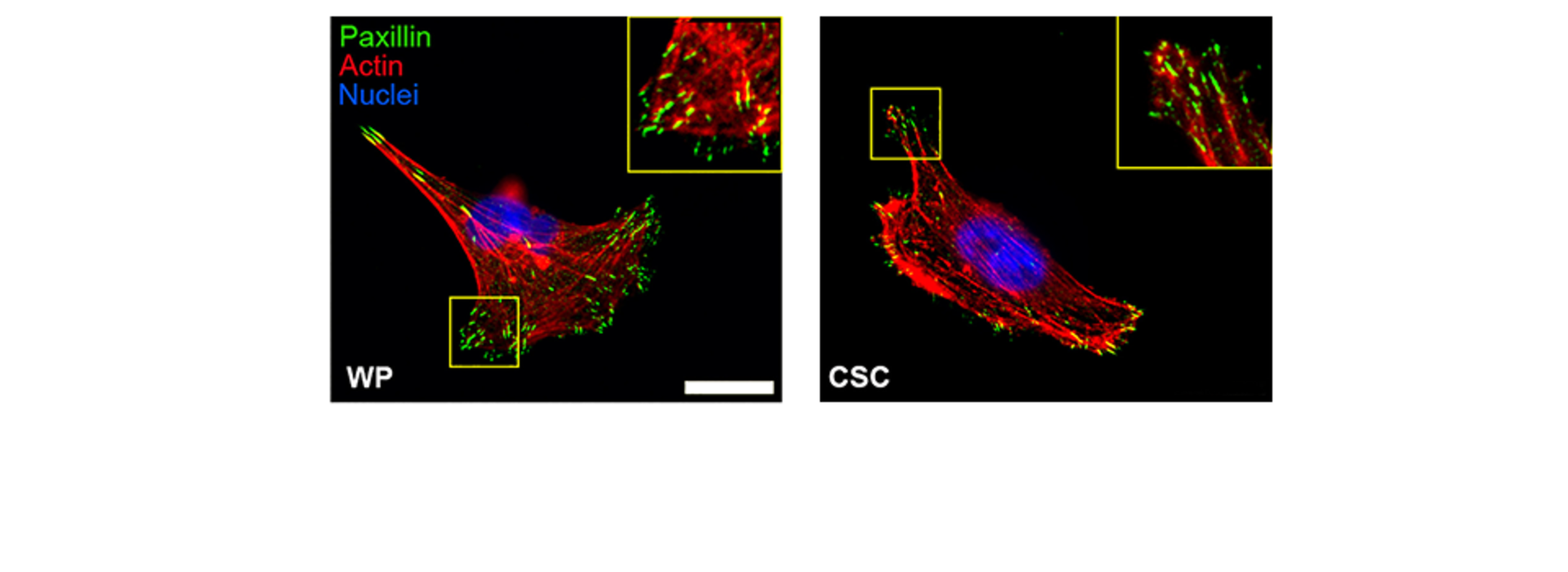
Stopping Cancer Stem Cells in Their Tracks
Cancer stem cells found in tumors can evade chemotherapeutic treatments and go on to reestablish and/or metastasize and form new tumors in other tissues. Paolo Provenzano and his colleagues have performed elegant experiments that have examined the mechanisms by which cancer stem cells migrate out of tumors and into other tissues in the body. They demonstrated that cancer stem cells can migrate faster on different substrates compared to the general tumor population. Using substrates with mechanical stiffness, they were able to show that cancer stem cells exert lower pulling forces on their environment and have less mature focal adhesions and cytoskeleton structures than the general tumor cell population. Chemicals that destabilized the microtubule in cancer stem cells reduced their mobility to levels seen in the general tumor population. Not only do these studies elucidate the mechanisms of cancer cell motility and metastasis, they also provide some insights into the effects of paclitaxel, a common chemotherapeutic drug that stabilizes microtubules and thereby reduces cell division. Although this treatment can indeed reduce the volume of a tumor by reducing cancer cell division, the stabilization of microtubules could lead to increased motility of the cancer stem cells that evade the chemotherapy, permitting them to migrate and form new tumors. This study will mot certainly inform new therapeutic approaches to treating cancers. Read the published paper.



